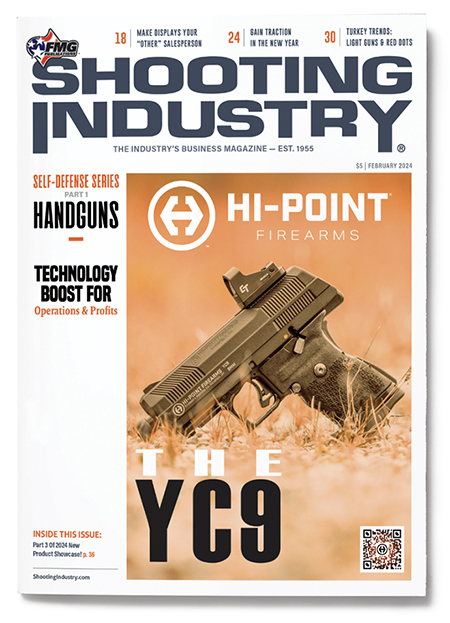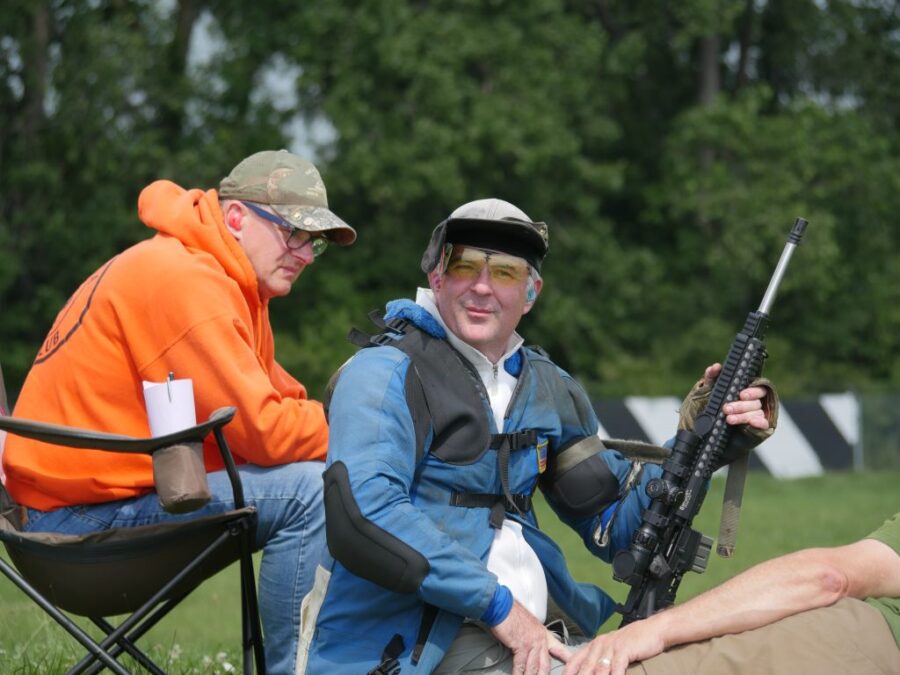Gaining Traction In The New Year
Is your store in need of an early-year boost to get business going? Here are several ideas that could be beneficial to you.
In my last article (“5 Ways To Boost Year-End Profits,” Nov. 2023), I promised additional words of wisdom from Jay Wallace — family patriarch of Adventure Outdoors, “The Greatest Store on Earth” in Smyrna, Ga. Jay has spent his life in retail; he started selling used paperback books and now owns a store stocking over 16,000 firearms.
To achieve real results, he reminds us who is in the driver’s seat.
“You, as the owner of your business, are the one person who can most change the bottom line,” he said. “So, use your time doing what will most affect the bottom line. Delegate the small stuff, spend some time thinking.”
When I was a store owner, it took me a long time to learn this one. I was too busy playing Whac-A-Mole — trying to solve the latest problem that popped up, rather than spending time to think about my business. The old saying, “Spend time steering the ship instead of shoveling the coal” certainly applies.
Trust Your Team
Toward the end of my store-owning days, I settled with being on the floor around 10% of the time. This gave me a feel for what was going on with employees and guests; plus, it allowed enough time for me to work on the “big picture” items. It’s not easy, especially if you’ve been running the business as a micromanager for years.
This is kind of embarrassing to admit, but at one point in my own business venture, if I wanted to think about the big picture I had to go to a local restaurant and sit down with my work computer. Why this was the case was totally my fault.
At the time, I was trying to manage employees, marketing, purchasing — everything right down to how each guest was handled. In a word, I was micromanaging. Regular guests knew what car I drove, and so they’d know if I was at the store and would want to talk with me about things my staff could have handled easily (and most likely better than I would have). So, by escaping to a restaurant, they couldn’t find me — which allowed me to get work done without being interrupted and have some thinking time.
In this case, not only was I not spending time working on what I should have been (thinking about the big picture), but I also was not getting the full benefit of input from employees. Instead of allowing them to help me grow the business, I stifled them.
This relates to Jay’s words about what most affects the bottom line and trusting your staff. In order to trust your staff, you have to continually give them more leeway. They will let you down in some instances, but that’s life. It’s not like we don’t make bad decisions as well, so consider it a learning experience and move on.
Keep Decisions In Perspective
To empower your staff, consider using a tiered system with different amounts of responsibility you’re willing to allow staff members to exercise. It works like this: a floor lead can decide an issue for a guest up to $100 without needing a manager, a manager can make decisions up to $999 without approval and your general manager handles things from $1,000 to a threshold of your choice.
Besides freeing up more of your time and not having to manage all of this, it really creates a strong staff — not just a staff that can read and follow a manual. This method will save you a lot of time evaluating used firearms for trade. If you have a few staff members handling this part of the business, it can certainly free up your time to devote to other tasks to improve the bottom line.
Think of it like this: If you don’t have staff that can make decisions without you, how will you ever get away to go on that trophy hunt? Next time you’re thinking of stepping in to make a small decision, imagine sitting on the side of a beautiful mountain as the sun comes up waiting for the trophy elk/deer/bear, etc., to come into view. Is it worth giving it up to make a small decision?
Jay also recommends having morning meetings with staff. One thing Jay and his son Eric look for during these meetings is staff with a negative attitude. Most likely a bad attitude is being passed to customers and other staff members, which can turn a store sour in a hurry. Speaking of staff, during slow times is the best time to reset schedules to reward your best employees and reduce or eliminate negative employees’ hours.
Last words of wisdom from the Wallace family: watch for generic sales transactions. These transactions are those where a staff member sells one item and doesn’t work for the add-on sale (where you make your money), and instead hurries to get the guest out the door. It’s a habit that was formed when guests were lined up to buy during peak periods and you needed to make a quick sale and get to the next. (In case you haven’t noticed, it’s not this way currently.)
In these times we need to go back to retail basics and brush up on our sales skills.
Got Gellets?
Have you heard of gellets? I have been in over 560 ranges and work with retailers every day, and never even heard of a gellet before walking into Alabama Firearms Academy in Boaz, Ala., this past October.
What is a gellet, you ask? It’s a colorful, absorbent bead that disintegrates on impact when shot out of a gel blaster gun — leaving almost no residue. At first glance they look exactly like airsoft pellets. The difference is they’re made mostly of water with a gel coating to hold the round shape until they splat (at which point they start to evaporate). Since they evaporate, there isn’t the massive slip-and-fall safety issue you have with airsoft pellets on hard surfaces, nor the never-ending job of vacuuming every last pellet.
Jared Meeks and Devin Campbell, Alabama Firearms Academy co-owners, were using gellets on one bay of their indoor shooting range for a youngsters’ Halloween shoot the day I visited. They had balloons, foam skulls, cemetery markers and my favorite moving target retrievers with blankets on them to look like ghosts as they came toward the shooters.
The fee for youngsters to shoot the targets with full-auto gellet blasters was $12 for 500 gellets. They had over 80 kids shoot the course and most purchased extra gellets, bringing in little over $1,000 and under $400 in hard costs. The event was a big success not just by bringing in a little extra profits — especially when you factor in labor cost — but because it brought 80-some kids and parents into the store/range to become future customers.
While this whole gellet thing is pretty new in the U.S., it has really caught on in Australia. A search online showed some AR-15-style gellet blasters, as well as many versions of popular handguns. Could your store use them as a training aid for concealed carry classes, hosting youth birthday parties or other events? It may take off here or it may not, but I think it’s something to keep an eye on — even if it’s just entertainment for yourself or kids.
Giveaway Success Story
Here I’ve saved the best tip for last — from Joel Swisher, owner of Uncoiled Firearms in Livonia, Mich. Joel and his GM Kenny Dang needed to get creative this past fall as their store/range is in the Detroit area, which is heavily tied to the auto market. When the Big Three (General Motors, Ford and Chrysler) are on strike, it makes for an extremely tough business climate.
Rather than feel sorry for themselves, Joel and Kenny brainstormed to come up with a way to sell more high-margin accessories. They held a drawing to win a sought-after firearm. The program they came up with has been a great success.
“We gave one ticket for every $100 (before tax) spent in the store for a chance to win a Daniel Defense rifle,” Joel said. “This was very helpful for selling the higher-profit accessories. Many times, a customer would add in a few extra dollars on an accessory to get one more ticket toward the giveaway.”
Any program that sells more accessories is a winner in my book.
Are there any ideas floating around in your head you’re scared to try? Now is the time to step outside of your comfort zone and go for it. Remember the old saying, “When you follow the herd, you step in what they leave behind.”





